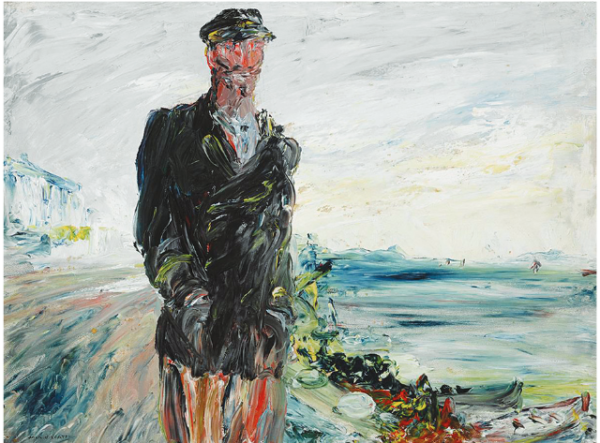
“No one creates. The artist assembles memories.” – Jack B. Yeats
Coinciding with the 150th anniversary of the birth of one of Ireland’s most important artists, The National Gallery of Ireland is hosting an exhibition exploring the role of memory in Jack B. Yeats’ work.
Running till February 6th and taking place in the Gallery’s Beit Wing, this exhibition, comprising 84 paintings, brings together the largest collection of Yeats’ oils in fifty years. Speaking to The Irish Times ahead of its launch, Brendan Rooney, head curator at the gallery, said, “we were incredibly well served by lenders. People, it appears to us, who own a Yeats love Yeats, and that applies to public and private collections. The generosity we experienced was terrific.”
Yeats mastered various media throughout his life; he trained as draughtsman and illustrator early in his career. But he is most celebrated for his oil paintings. He completed over a thousand in his lifetime, with 594 paintings between the age of seventy and eighty years of age. From his early playful reimaginings to the existential reflections of his later work, memory proved a constant source of wild inspiration.
The exhibition begins by exploring Yeats’ emotional connection to Sligo, where the artist lived from 1879 to 1885 with his grandparents. But Yeats was a well-travelled soul; the bustling metropolises of New York, London and Paris excited him, and the paintings on display mirror his enthusiasm, with their giddy strokes of movement and vibrant hues. ‘A Palace’ (1933) is a prime example: a colourful recollection of the sparkling Grill Room of The Cafe Royal in London: a meeting place for writers, artists, politicians and intellectuals around that time.
He was also fascinated by people, and by the late 1930s he had already assembled a cast of familiar character types from Irish life who made regular appearances throughout his work. This fascination tended to focus on unique personalities or strangers he encountered during his rural travels. The most striking example of these is ‘The Barrel Man’ (1912), a depiction of a – perhaps cruel – rural festivity, involving a man fighting off sticks being aimed at him from the safety of a barrel.
The exhibition concludes with what’s widely considered Yeats’ best work. As old age crept in, so did a period of deep reflection. The death of his wife Cottie, and his siblings – William, Elizabeth and Susan – all within the same decade had a profound impact on the artist’s paintings. Where his early work featured figures in a state of enjoyment or pursuit, the characters populating his later work seem weighed down with graver concerns. Even the titles of these paintings suggest a deep state of wonder towards the after-life.
My personal highlights include ‘Sleep Sound’ (1955), painted when Yeats was eighty-five years old, and is one of several works in which the artist clearly addresses the subject of death and likens it to sleep. Fun fact: The painting was owned by the musician David Bowie at the time of his death and is now worth an estimated €210,000.
Another notable piece is the recent acquisition ‘Bachelor’s Walk, In Memory’ (1915), which depicts an incident in 1914 that saw the King’s Own Scottish Borderers opening fire on a crowd of demonstrators in Dublin City Centre – one of very few paintings with which Yeats responded directly to contemporary political events.
Ticket prices range from €10 – €16 (although only €5 every Tuesday from 9.45am to 1pm). Discounts for mid-week tickets and for those booked online, as well as for the over 65s, students, and individuals who are unwaged. It should take approximately 30mins to complete the exhibition.
Curators | Donal Maguire and Dr Brendan Rooney
For further information, be sure to visit www.nationalgallery.ie



